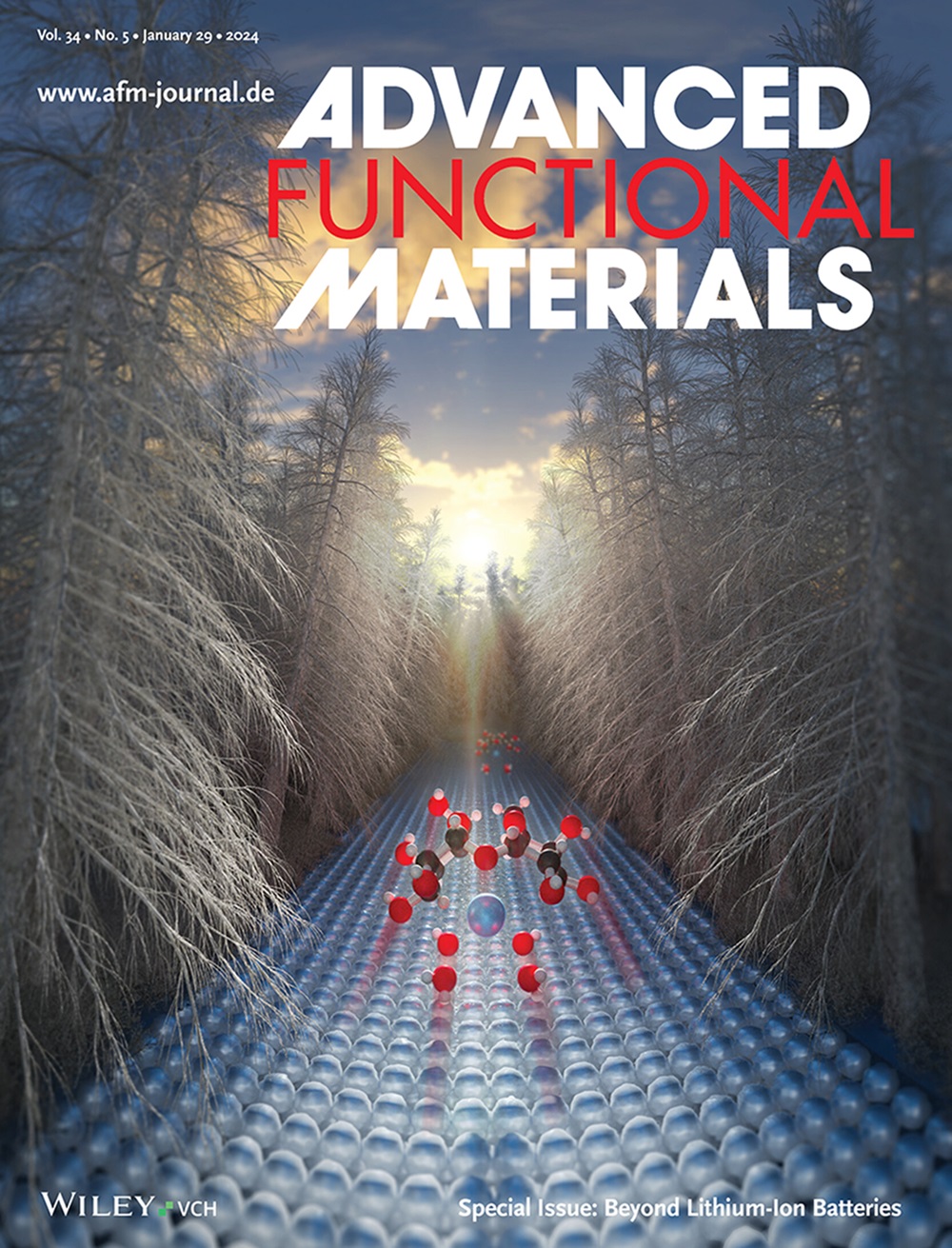Promoting Layered Oxide Cathodes Based on Structural Reconstruction for Sodium-Ion Batteries: Reversible Phase Transition, Stable Interface Regulation, and Multifunctional Intergrowth Structure
IF 18.5
1区 材料科学
Q1 CHEMISTRY, MULTIDISCIPLINARY
引用次数: 0
Abstract
Layered transition-metal oxides (NaxTMO2) are one of the most promising cathode materials for sodium-ion batteries due to their high theoretical specific capacities, good conductivity, and environmental friendliness. However, several key scientific issues of NaxTMO2 cathode materials still persist in practical applications: i) complex phase transitions during the charge/discharge process owing to the slip of the transition-metal layer; ii) the tendency for the interface to react with the electrolyte, resulting in structure degradation, and iii) reactions between active materials and H2O as well as CO2 on exposure to air in the environment to form alkaline substances on the surface. To understand electrochemical storage mechanisms and solve these problems, several modification strategies of NaxTMO2 have been reported recently, including bulk doping, concentration gradient structure design, interface regulation, and intergrowth structure construction. This review focuses on reversible phase transitions, stable interface regulation, and multifunctional intergrowth structure of the NaxTMO2 material from the inside to the outside. The future research directions for NaxTMO2 are also analyzed, providing guidance for the development of commercial layered oxides for next-generation energy storage systems.

基于结构重构促进钠离子电池的层状氧化物阴极:可逆相变、稳定界面调节和多功能互生结构
层状过渡金属氧化物(NaxTMO2)具有理论比容量高、导电性好和环境友好等优点,是最有前途的钠离子电池阴极材料之一。然而,NaxTMO2 阴极材料在实际应用中仍存在几个关键的科学问题:i) 由于过渡金属层的滑移,充放电过程中存在复杂的相变;ii) 界面容易与电解质发生反应,导致结构退化;iii) 活性材料与 H2O 和 CO2 在环境空气中发生反应,在表面形成碱性物质。为了了解电化学储能机理并解决这些问题,最近报道了几种 NaxTMO2 的改性策略,包括体掺杂、浓度梯度结构设计、界面调节和生长间结构构建。本综述将重点讨论 NaxTMO2 材料从内到外的可逆相变、稳定的界面调控和多功能互生结构。还分析了 NaxTMO2 未来的研究方向,为开发用于下一代储能系统的商用层状氧化物提供指导。
本文章由计算机程序翻译,如有差异,请以英文原文为准。
求助全文
约1分钟内获得全文
求助全文
来源期刊

Advanced Functional Materials
工程技术-材料科学:综合
CiteScore
29.50
自引率
4.20%
发文量
2086
审稿时长
2.1 months
期刊介绍:
Firmly established as a top-tier materials science journal, Advanced Functional Materials reports breakthrough research in all aspects of materials science, including nanotechnology, chemistry, physics, and biology every week.
Advanced Functional Materials is known for its rapid and fair peer review, quality content, and high impact, making it the first choice of the international materials science community.
 求助内容:
求助内容: 应助结果提醒方式:
应助结果提醒方式:


